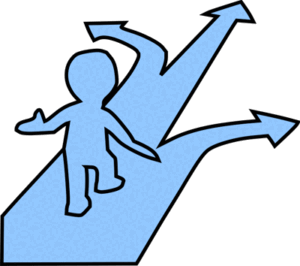 My last post provided an overview of Annie Duke’s decision-making process when contemplating an important move in her life – e.g., moving to a new city, purchasing a home or car, taking a new job, hiring an employee, etc. She assesses preferences, payoffs, and probabilities and documents her assumptions, facts, and analyses for post-decision assessment. She also balances her inside view of the world with an outside perspective. It takes time and effort, but it yields a more accurate picture of the road ahead with all its challenges and obstacles and increases the likelihood that she’ll realize a good result.
My last post provided an overview of Annie Duke’s decision-making process when contemplating an important move in her life – e.g., moving to a new city, purchasing a home or car, taking a new job, hiring an employee, etc. She assesses preferences, payoffs, and probabilities and documents her assumptions, facts, and analyses for post-decision assessment. She also balances her inside view of the world with an outside perspective. It takes time and effort, but it yields a more accurate picture of the road ahead with all its challenges and obstacles and increases the likelihood that she’ll realize a good result.
While she argues for an appropriate investment in time for big decisions, Duke is quick to point out that we often squander valuable time on inconsequential ones. For example:
- A study commissioned by Seated (a restaurant mobile app) reported that American couples spend two-and-a-half hours a week negotiating what type of meal to eat.
- The Nielsen Total Audience Report suggests that we spend 45 hours per year choosing our live or streaming content on TV.
- Retailer Marks & Spencer claims that men take 13 minutes daily and women 17 minutes daily figuring out what to wear.
Those three activities combined yield a total of 254 to 278 hours of analysis paralysis, or roughly 16 to 17 days’ worth of waking hours. Is that really necessary?
Duke’s litmus test for investing her time rests in figuring out the penalty for a lower quality decision. If low, then make the decision quickly. If high, slow down. Alternatively, consider the impact of a decision in a week? A month? A year? If it won’t matter all that much, then put your foot on the accelerator.
Decisions that repeat offer little reason to go slow. Order a meal (or hedge you bets and order two for sharing with a friend). Watch a show and switch if it doesn’t prove engaging. Choose an outfit. The opportunity to make a different choice will present itself forthwith. In the meantime, you save time and gain additional insights on preferences to inform future choices.
If the available options present comparably attractive outcomes, go fast. These circumstances typically carry an inner voice that says: “I can’t decide because they’re all good choices.” That means the decision is easy. You’ll enjoy a favorable outcome no matter what.
Another trick to speed decision making involves asking yourself: “If this option were my only choice, would I be happy with it?” Then separate the options that you’d find satisfactory from the ones that fall short of joy and choose one of the foregoing.
Duke characterizes some choices as “Two-Way Door Decisions” – i.e., ones in which it’s as easy to enter the decision as it is to exit. For such choices, go fast and gain experience. If it’s a “One-Way Door Decision” – i.e., a high impact choice with a high cost to quit – then see if there are low impact decisions you could make ahead of time to inform the looming high impact choice. In tandem, seek additional information that might illumine a preferred path.
Finally, you can speed decision processes by making “category decisions” that dictate what you will and won’t do – e.g., foods you’ll eat, investments you’ll make. Don’t relitigate items for which you’ve already made considered choices.